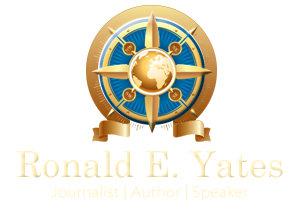One of the more enduring activities of human beings has always been to imagine what the future will bring. We all do it, some more than others.
It’s what separates us from the rest of earth’s creatures, most of which are too consumed with daily survival to think past their last meal or their next one.
As authors of historical fiction, we invent characters and put them in various bygone eras. Then we create conflict for them to deal with, people to love and to hate, obstacles to overcome, a tragedy to rise above, and joyous moments to take pleasure in.
But how often do we have our characters speculate about what the world will look like in the future?
Not often, I am sure. And the reason is probably the same one I gave for earth’s “other” creatures. Our characters are often dealing with one conflict after another or just trying to survive. What the world will look like one hundred, two hundred, or three hundred years is simply not within their intellectual compass.
Authors who write science fiction and specifical books about time travel think about these things all the time. I do and I don’t even write science fiction (though I do enjoy a good time travel story when I find one).
So what has all of this got to do with historical novels? you may be asking.
I think having characters wonder about the future either via dialogue or in unspoken reflection adds another dimension to the people we create in eras such as the Dark Ages, the Middle Ages, the Enlightenment, or, in the case of my trilogy, the 19th Century and early 20th Century.
So how might we do that? Well, considering that truth is always stranger than fiction, you might examine predictions made about the future from some pretty famous and creative people.
Recently someone sent me a copy of a story that appeared in the 1911 edition of the now-defunct Miami Metropolis newspaper.
The story was an interview with none other than Thomas Edison in which America’s most famous inventor made some rather astounding predictions about the future. Some were quite accurate and some were, shall we say, a bit off target.

For example, he rather amazingly predicts the e-book reader and at the same time predicts by 2011 we will be able to transmute metals and turn iron into gold. Ahem…
Here is that article in its entirety. Enjoy.
What will the world be a hundred years hence?
“None but a wizard dare raise the curtain and disclose the secrets of the future; and what wizard can do it with so sure a hand as Mr. Thomas Alva Edison, who has wrested so many secrets from jealous Nature? He alone of all men who live has the necessary courage and gift of foresight, and he has not shrunk from the venture.
Already, Mr. Edison tells us, the steam engine is emitting its last gasps. A century hence it will be as remote as antiquity as the lumbering coach of Tudor days, which took a week to travel from Yorkshire to London. In the year 2011 such railway trains as survive will be driven at incredible speed by electricity (which will also be the motive force of all the world’s machinery), generated by “hydraulic” wheels.
But the traveler of the future, says a writer in Answers, will largely scorn such earth crawling. He will fly through the air, swifter than any swallow, at a speed of two hundred miles an hour, in colossal machines, which will enable him to breakfast in London, transact business in Paris and eat his luncheon in Cheapside.
The house of the next century will be furnished from basement to attic with steel, at a sixth of the present cost — of steel so light that it will be as easy to move a sideboard as it is today to lift a drawing room chair. The baby of the twenty-first century will be rocked in a steel cradle; his father will sit in a steel chair at a steel dining table, and his mother’s boudoir will be sumptuously equipped with steel furnishings, converted by cunning varnishes to the semblance of rosewood, or mahogany, or any other wood her ladyship fancies.
Books of the coming century will all be printed leaves of nickel, so light to hold that the reader can enjoy a small library in a single volume. A book two inches thick will contain forty thousand pages, the equivalent of a hundred volumes; six inches in aggregate thickness, it would suffice for all the contents of the Encyclopedia Britannica. And each volume would weigh less than a pound.
Already Mr. Edison can produce a pound weight of these nickel leaves, more flexible than paper and ten times as durable, at a cost of five shillings. In a hundred years’ time the cost will probably be reduced to a tenth.
More amazing still, this American wizard sounds the death knell of gold as a precious metal. “Gold,” he says, “has even now but a few years to live. The day is near when bars of it will be as common and as cheap as bars of iron or blocks of steel.
“We are already on the verge of discovering the secret of transmuting metals, which are all substantially the same in matter, though combined in different proportions.”
Before long it will be an easy matter to convert a truckload of iron bars into as many bars of virgin gold.
In the magical days to come there is no reason why our great liners should not be of solid gold from stem to stern; why we should not ride in golden taxicabs, or substituted gold for steel in our drawing room suites. Only steel will be the more durable, and thus the cheaper in the long run.”
Golden ocean liners and cabs? I think we can all be thankful that Edison missed the boat (and the taxi) on that one.

